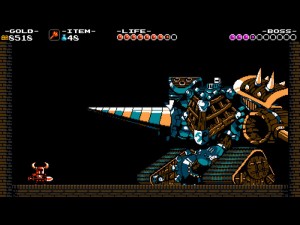Recently I’ve been looking at two games that were designed as a remembrance of old school games: Volgarr the Viking and 1001 Spikes. From graphics to gameplay, these titles look like they could have been released in the mid 80s- early 90s. The allure of old school game design is something that we hear from a lot of developers and gamers and is even used as a tagline for some games. But having grown up playing these “old school” titles is old school design really a good thing?
Going Back to Class:
Old School is another one of those terms that can mean different things for different people and games. We could be talking about everything from King’s Quest to Mario to Star Control and so on. So for this post I’m going to define Old School game design as the following:
Old School: Designing a game without using modern views of design or systems.
When gamers talk about Old School game design in reverence, they are referring to a time where designers weren’t constrained by modern views on accessibility: No DLC, no micro transactions, no focus group testing, just making the best product that someone could at the time.
When I interviewed GOG.com, they talked about how classic game designers were free to make the games they wanted and this led to many unique and complex titles that do beat out some games today in terms of sophistication. There is a reason why people still talk about the original X-Com, Star Control 2 or even classic console games like Super Mario Bros 3, Mega Man and so on.
But as someone who grew up playing these games when there was no such thing as old school, my rose tinted glasses have some cracks in them.
Slapped by a Ruler:
It’s important to remember that game designers were limited by the technology of the time and that had a major factor in what they could design. Games didn’t have a save feature, not because designers wanted things to be difficult, but because the technology wasn’t standardized yet.
Infinitely spawning enemies were due to the use of repeated spawn triggers and many classic games featured cumbersome controls due to the primitive gamepads. And talking about PC games, many of them featured horrible UIs as mouse functionality didn’t exist. For the games that did, you still had screens of information and each game provided no learning curve.
I’ve talked about this before but despite how great X-Com was from a design point of view, it had one of the worst UIs for the time which limited accessibility. Today, you can learn and understand most games within under an hour of play, but back then it could take days or even months to figure out one game. Because design wasn’t standardized, each game was like its own course that you needed to learn.
Bringing this back to Volgarr and Spikes, both games promote being old school by using difficulty as the advertisement. Volgarr is similar to Ghost and Goblins with committed jumping and health based on armor.
Die before you beat a stage and you have to restart from square one. The game does have boss fights; the same rules of death apply to them.
1001 Spikes is about death as well but breaks one of the cardinal rules of modern game design: Forcing the player to die. In the game, each level requires the player to avoid a series of death traps to find the key and open the door to escape. The death traps come in many forms including spikes shooting out of the ceiling and floor and are indistinguishable from the regular blocks. Watching footage of the game there is no way that someone would avoid dying based on their skill.
Instead the game is built around forced trial and error. Unlike say Super Meat Boy where death was because you were testing out different movement and jumping velocities, 1001 Spikes simply kills you because you didn’t know about that trap until you triggered it.
Even though I loved Super Meat Boy, I don’t have the desire to play either Volgarr or 1001 Spikes due to their old school design decisions. I grew up playing games like them and I don’t want to go back to those times. This is why some of my favorite games are those that appear old school, but feature modern design.
Old is New Again:
For many modern gamers, old school to them means difficulty: Games where you’re not led on a path, have to deal with tutorials, treated like a child, etc. And this is why there has been almost a renaissance of both the term old school and increased difficulty. Super Meat Boy, Dark Souls, numerous Rogue-likes and so on were all designed around being challenging games.
You weren’t going to just casually beat these games; you had to earn it through player mastery which is rare these days. But while many of these titles boasted being “old school” they featured a modern eye towards both UI design and game systems. The souls series for instance are brutal games, yet feature a UI that lays everything out for the player

Rogue-likes have become popular these days thanks to making use of modern conventions of design as opposed to just being completely old school.
The challenge with designing games to be old school is figuring out that line between making something a challenge and just having arbitrary conditions that are frustrating.
One of my recent favorite examples of this bridge between old and new would have to be the game Shovel Knight. Shovel Knight for all intents and purposes looks like a game straight out of the NES era. Yet it features elements like checkpoints, saves and progression that would be seen in a modern game.
Saying your game is “old school” can mean different things as evident by this post and it’s important to understand just what you are talking about. Not having elements like saving, checkpoints and poor UI just showcase the worst parts of classic games.
Being able to develop a complex title and keep to modern sensibilities is an important aspect of understanding great game design. This goes back to the fact that just having a complex or overly difficult title doesn’t automatically make it better. Creating a game that only you and your friends will enjoy doesn’t make you a good game designer, but being able to distill complexity down into something engaging does.
There is a lot that goes into making great games and balancing complexity, difficulty and accessibility will let you make great games regardless of what “school” it belongs to.



